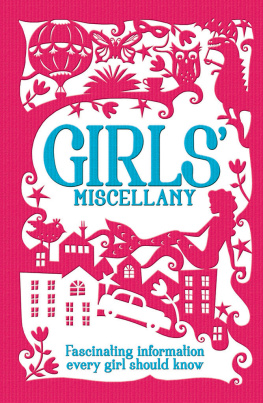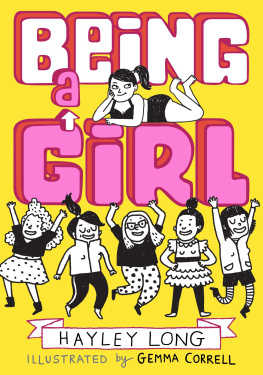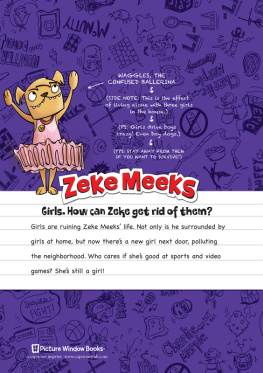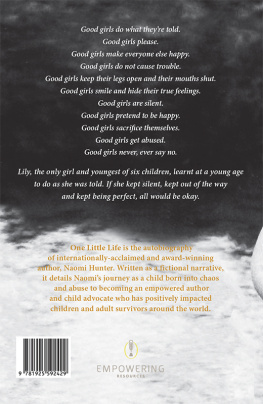SERIAL GIRLS
SERIAL GIRLS
FROM BARBIE TO PUSSY RIOT
MARTINE DELVAUX
Translated by Susanne de Lotbinire-Harwood
Between the Lines
Toronto
Serial Girls: From Barbie to Pussy Riot
Originally published in French as Les filles en srie: Des Barbies aux Pussy Riot,
2013 Les ditions du remue-mnage, Montreal www.editions-rm.ca
English translation 2016 Susanne de Lotbinire-Harwood
First published in English translation in 2016 by
Between the Lines
401 Richmond St. W., Studio 281
Toronto, Ontario M5V 3A8 Canada
1-800-718-7201 www.btlbooks.com
Certain passages of this book were first published in French in the publications Libert, bbord, Tangence, Frontires, and Globe.
All rights reserved. No part of this publication may be photocopied, reproduced, stored in a retrieval system, or transmitted in any form or by any means, electronic, mechanical, recording, or otherwise, without the written permission of Between the Lines, or (for photocopying in Canada only) Access Copyright, 56 Wellesley Street West, Suite 320, Toronto, Ontario, M5S 2S3.
Every reasonable effort has been made to identify copyright holders. Between the Lines would be pleased to have any errors or omissions brought to its attention.
Library and Archives Canada Cataloguing in Publication
Delvaux, Martine, 1968
[Filles en srie. English]
Serial girls: from Barbie to Pussy Riot / Martine Delvaux; translator, Susanne de Lotbinire-Harwood.
Translation of: Les filles en srie, des Barbies aux Pussy Riot.
Issued in print and electronic formats.
ISBN 978-1-77113-185-8 (paperback). ISBN 978-1-77113-186-5 (epub).
ISBN 978-1-77113-187-2 (pdf)
1. Women Social conditions. 2. Women in literature. 3. Women in motion pictures. 4. Girls in popular culture. I. Lotbinire-Harwood, Susanne de, translator II. Title. III. Title: Filles en srie. English
HQ1150.D3413 2016 | 305.42 | C2016-904716-4 |
C2016-904717-2 |
Cover design by Jennifer Tiberio
Page preparation by Steve Izma
Cover image: Vanessa Beecroft, vb43 performance, Gagosian Gallery, London, UK, 2000, vb43.018.te. Photographed by Todd Eberle. 2013 Vanessa Beecroft
Printed in Canada
We acknowledge for their financial support of our publishing activities the Government of Canada through the Canada Book Fund, the Canada Council for the Arts, which last year invested $153 million to bring the arts to Canadians throughout this country, and the Government of Ontario through the Ontario Arts Council, the Ontario Book Publishers Tax Credit program, and the Ontario Media Development Corporation.
We acknowledge the financial support of the Government of Canada through the National Translation Program for Book Publishing, an initiative of the Roadmap for Canadas Official Languages 20132018: Education, Immigration, Communities, for our translation activities.

Acknowledgements
Thank you to Amanda Crocker and Dave Molenhuis for their amazing work on this book! Thanks to Patrick Harrop for constant support, to Valrie Lebrun for her help throughout the final stages of this process, and to Elonore Delvaux-Beaudoin for working with me on the pictures!

Barbie Head Bracelet from WordPress blog https://diynotuiuc.wordpress.com
Introduction
I Is a Girl
It was the summer of 2012. Every evening we would go out, improvising new routes through the city under the watch of police clad in black, in helmets, batons in hand. We lived for leaflets, articles, op-eds, TV news bulletins, meetings, and demonstrations. Nothing else existed apart from what was being described as a revolution. The student cause had driven part of Quebecs population out onto the streets. Social networks were taken over. The noise of the casserole rose like the sounds of shared rage.
I too was out on the street. Some evenings I joined in and banged on my saucepan on the balcony with my daughter. Other nights I went onto the streets to march, fading into the crowd. I mingled with the girls marching and chanting slogans. We moved forward side by side, in step with each other. And in the street the boys were always there too. Fathers, sons, colleagues, friends, militants brothers in arms. They were everywhere amid the anonymous crowd, everywhere, like us. Girls. I would ask myself what it all meant girls assembled, brought together by a cause. Feminist strikers were approaching the strike differently, often struggling in different ways and for different reasons. The spectacle of their bodies in collectivity undoubtedly spoke of other things.
I could hear Virginia Woolf, in her Three Guineas, standing up to men who wanted to speak in the name of women. She cried: Not in our name! That is, we experienced the world differently, and even within the context of a struggle, one that concerned everybody, women had to demand to be heard. I turned my attention to the events and observed that the mobilized female students, these militant feminist strikers, were proof of a particular kind of engagement, one where their position in the anonymity of the struggle remained singular. Though Michel Foucault has clearly shown the power of resistance that resides in the production of the common good as opposed to the private interiority and assigned identities, the fact remains that for the feminist strikers, anonymity needed to be experienced differently. For, in order to prevent this becoming-revolutionary from being used as an alibi for domination and domestication, it had to go hand in hand with good use of the singular: it is necessary, always and everywhere, to keep thinking the feminine.
Through these feminist strikers,
It is this Ungovernable that interests me, and within it I find serial girls.

Serial girls are a series of girls who look alike, whose movements are perfectly aligned, evolving side by side in harmony, indistinguishable one from the other except in clothing detail, like a pair of shoes, or hair colour or skin tone or slightly differing curves. Machine-girls, photo-girls, showgirls, shop-girls, trophy-girls they present the illusion of perfection. I could see these girls everywhere. They seemed to form both a ballet troupe and an army corps. They were cannon-fodder girls, manufactured by the factory of everyday misogyny, but they resisted their commodification. They were girls rising up from the dead.
Playing with Barbies, going to a Rockettes show, or consuming images of naked women in porn magazines theyre all something bordering on necrophilia. They all amount to consuming an object that does not react, that does not respond, and that anaesthetizes us through the device of repetition. In our so-called enlightened society, serial girls are candy that feeds a most trivial craving: comfort and intellectual laziness. They respond to a fascistic, perverse, and pleasurable desire for sameness.
This sameness is white and thin. It bears a standard of sizable breasts, a small waist, a flat stomach, shapely long legs, and long straight blond hair. This Western standard is given as universal form, to which all women around the globe (whoever they are, whatever the colour of their skin, whether they are cis or trans) end up being compared to. This is the ideal that I am interested in uncovering here: an image that is oblivious to its true colours, its own politics; a hegemonic image that gives itself as universal, cancelling out the place of real women (in particular women of colour and non-cis women), and erasing (effectively or symbolically) actual human beings, their materiality, their specificity, and their differences.















